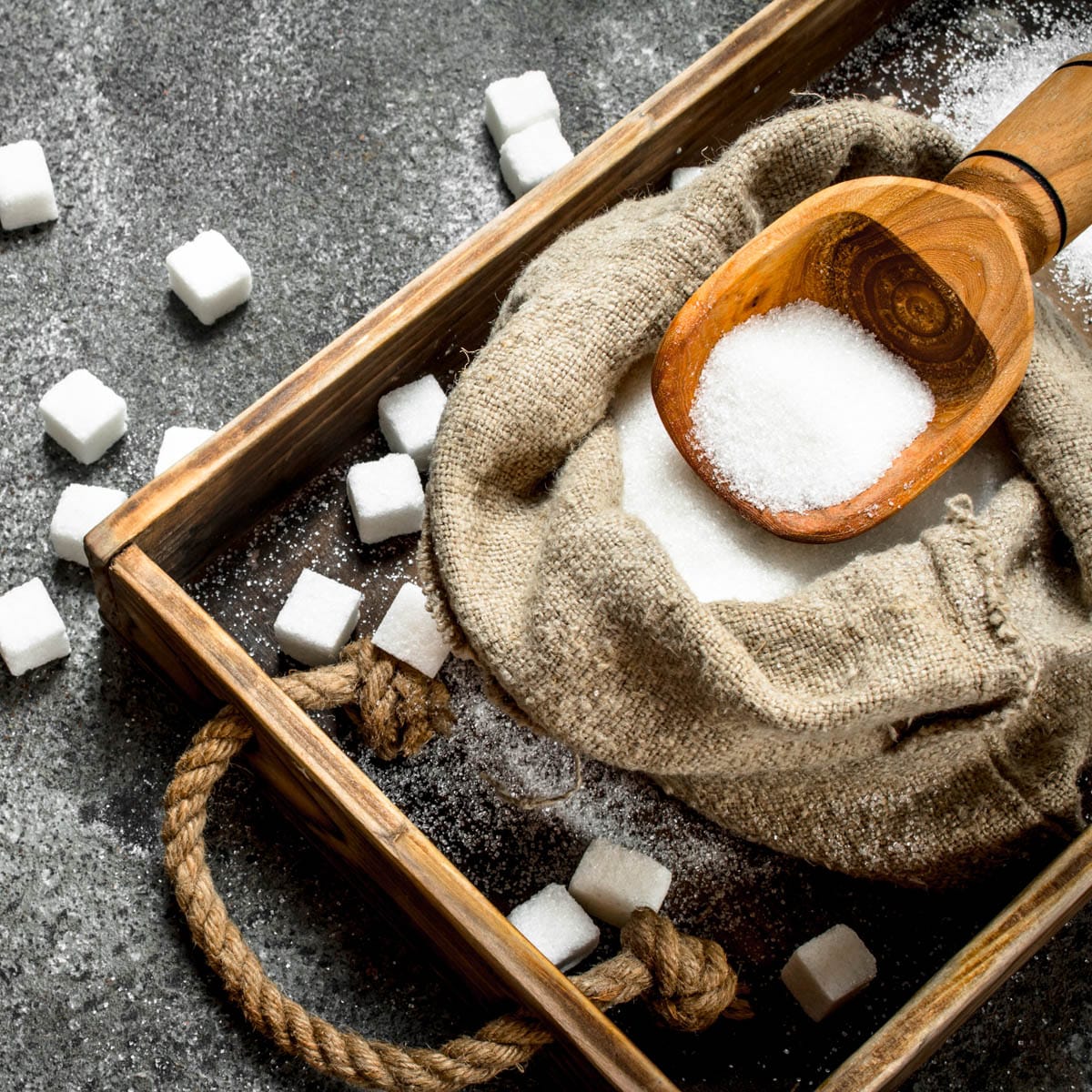How to Store Sugar Long Term
Sugar – the sweet, versatile ingredient that adds a touch of magic to our baked goods, beverages, and culinary creations.
Whether you’re an avid baker or simply enjoy a spoonful in your morning coffee, knowing how to store sugar long-term is essential for maintaining its freshness and preventing clumping or spoilage.
In this guide, we’ll explore the best practices for storing different types of sugar, factors to consider for long-term storage, and how to identify if sugar has gone bad.
How to store sugar
To store sugar long-term, keep it in a cool, dry place, in airtight containers away from moisture, heat, and strong odors. Divide large quantities into smaller portions and choose food-grade containers that seal tightly. Protect sugar from pests and clumping by storing it in a clean, pest-proof environment.

When it comes to storing sugar, the goal is to protect it from moisture, pests, and environmental factors that can affect its quality and shelf life.
Proper storage methods vary depending on the type of sugar you’re working with.
White sugar
White sugar, the most common type, is best stored in an airtight container in a cool, dry place. This can be a pantry or kitchen cabinet away from heat sources.
Ensure the container is tightly sealed to prevent moisture absorption, which can lead to clumping. Keep it away from strong odors as sugar easily absorbs them.
Brown sugar
Brown sugar, with its moist and sticky nature, requires extra care to prevent hardening and clumping.
Store it in an airtight container, and for long-term storage, consider adding a slice of bread or a small piece of apple to maintain its moisture. Learn how to soften brown sugar in case your clumps and hardens.
Alternatively, you can store brown sugar in the freezer, as we’ll discuss later in this guide.
Powdered sugar
Powdered sugar, or confectioners’ sugar, should be stored in an airtight container to prevent moisture absorption, which can cause clumping and affect its texture.
Additionally, keep powdered sugar away from heat sources, as it can melt or become sticky.
Sugar cubes
To store sugar cubes, keep them in a cool, dry place in an airtight container or resealable bag. Ensure that the container is tightly sealed to prevent moisture absorption and clumping.
It’s important to protect the sugar cubes from exposure to heat, direct sunlight, and strong odors. By following these simple steps, you can maintain the freshness and integrity of your sugar cubes for extended periods.
Long-term storage
Properly storing sugar for the long term is essential to maintain its freshness and prevent clumping. To ensure its quality, store sugar in a cool, dry place in airtight containers.
Divide large quantities into smaller portions to minimize exposure to air and moisture. Choose food-grade containers that seal tightly to protect against pests and contaminants.
Keep sugar away from heat sources, direct sunlight, and strong odors. By following these guidelines, you can store sugar long-term, guaranteeing that it remains free-flowing and ready to sweeten your favorite recipes whenever you need it.
When planning long-term storage for sugar, there are a few important factors to consider:
- Type of Sugar: Different types of sugar may require specific storage considerations due to variations in moisture content and texture.
- Quantity: If you purchase sugar in large quantities, it’s crucial to divide it into smaller portions for storage. This prevents frequent exposure to air and moisture when accessing the sugar.
- Type of Container: Opt for airtight containers made of food-grade materials to ensure proper sealing and protection against moisture and pests.
- Environment: Store sugar in a cool, dry place away from direct sunlight, heat sources, and strong odors.
How to tell sugar is bad
While sugar generally has a long shelf life, it can go bad under certain conditions. Here are some signs to watch out for:
- Check the Smell: Rancid or off smells are indicators of spoiled sugar.
- Look for Changes in Texture: Hardening, clumping, or the presence of lumps may suggest moisture absorption or spoilage.
- Check for Mold: Any signs of mold growth on the sugar indicate that it’s no longer safe for consumption.
- Look for Bugs: If you notice bugs or pests in your stored sugar, it’s best to discard them immediately.
When baking it is also important to know how to tell if flour is bad so that your baked goods also come out fresh.
Frequently asked questions about how to store sugar
Conclusion
Storing sugar properly is essential to maintain its quality and prevent clumping or spoilage. By following the appropriate storage methods based on the type of sugar, and considering factors like quantity, container type, and storage environment, you can enjoy fresh, free-flowing sugar whenever you need it.
Be attentive to signs of spoilage and regularly inspect your stored sugar to ensure its safety. With these guidelines and the answers to frequently asked questions, you’re now equipped to store sugar long-term with confidence.

Online Cooking for Beginners Course